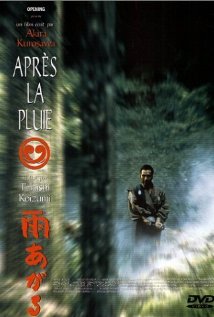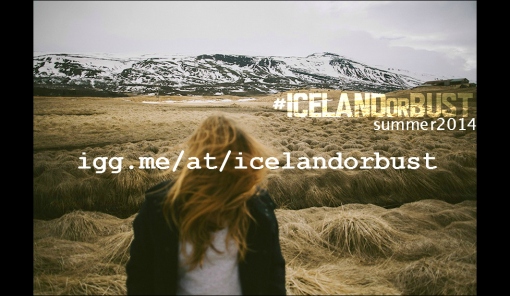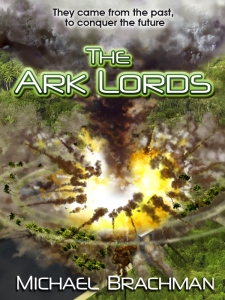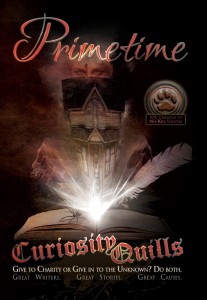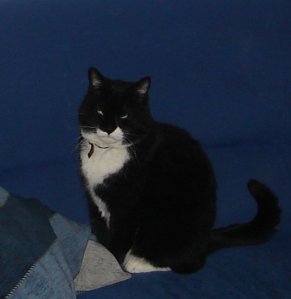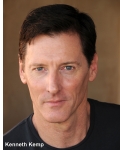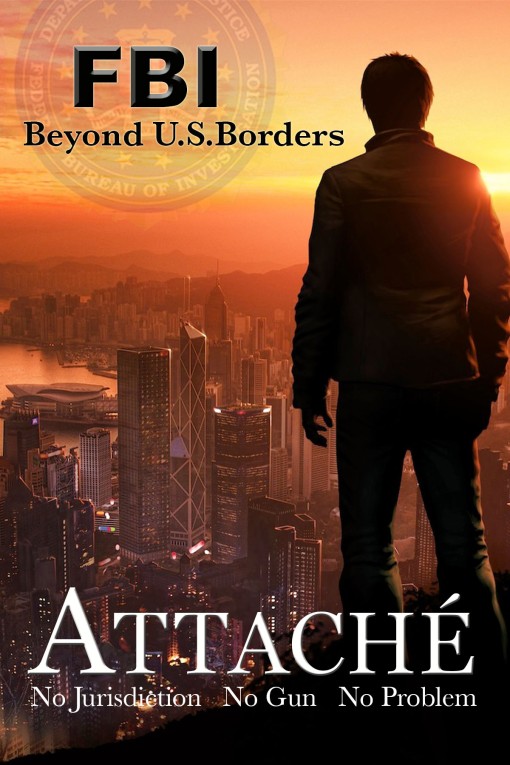Today on CSReview, author and screenwriter Jon D’Amore is making a come-back talking about a year of an incredible spin-off that followed the release of his book THE BOSS ALWAYS SITS IN THE BACK.
CS: When we spoke last year, prior to your book THE BOSS ALWAYS SITS IN THE BACK was to be released, did you know you’d quickly get your own fan base with thousands of copies sold?
 Jon D’Amore: Because the story of THE BOSS centers around a group of mob guys from Hudson County, New Jersey (the county directly across the Hudson River from Manhattan, quickly accessible via the Lincoln and Holland Tunnels),it was only logical that a good percentage of my “fan base” would come from that area. Much of the book’s initial success was due to two Union City, New Jersey, Facebook pages.
Jon D’Amore: Because the story of THE BOSS centers around a group of mob guys from Hudson County, New Jersey (the county directly across the Hudson River from Manhattan, quickly accessible via the Lincoln and Holland Tunnels),it was only logical that a good percentage of my “fan base” would come from that area. Much of the book’s initial success was due to two Union City, New Jersey, Facebook pages.
Union City was where I was born and spent the first 12 years of my life. When the book was released, and after living in Los Angeles for nearly 15 years, I went back to New Jersey to promote it…and the people came out en masse. It was amazing. Very heartwarming and humbling. The night I returned to Union City for a reading of THE BOSS at the William V. Musto Cultural Center, I was speechless when Mayor and State Senator Brian Stack, Police Chief Brian Barrett and Commissioner Lucio Fernandez came up to the podium and honored me with a proclamation naming May 24th “Jon D’Amore Day” in the city of my birth.
It didn’t take long for things to explode from there. Using the accumulated radio and TV segments, promotional materials and articles, THE BOSS snowballed. It also helps that my readings and responses to questions are entertaining, informative and humorous.

The car in this picture was used in the infamous Godfather.
I recently returned from a four week tour of Florida, and I’m already being asked to return by the bookstores where I appeared. But what’s most rewarding are the emails I get every week…every single week…from people I don’t know telling me how much they’ve enjoyed THE BOSS and that it made them laugh while keeping them on the edge of their seats, or simply because it brought back memories of people and places they knew. Readers appreciate the respect, honor and love I showed for the characters…compelling characters who also had terribly violent and criminal sides to them.
CS: Jon, I think getting a day named after you is a total blast! The recent news of you securing a major NYC literary agency – what can you tell me?
Jon D’Amore: A major literary agency was something I’d been waiting, working and striving for. Early on I could have signed with a number of agencies, but I felt they weren’t high enough on the literary food-chain. I knew THE BOSS needed to be promoted and distributed in a big way…on a large scale. In order to do that, I needed an agent who shared my vision…and an agency with the power to make it happen.
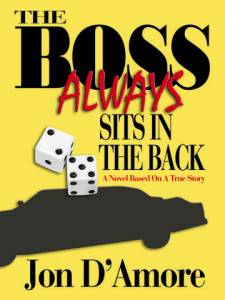 I wanted an agent who can walk into any of the best publishing houses and put THE BOSS in the hands of the person who’s going to get it, the person who has true belief in the product, the person who knows the genre and the target audiences, not just one target audience, but the many this book appeals to. That is paramount. Anything less means THE BOSS would simply languish in the mediocrity of so many other poorly marketed books. So I had to wait until the right agency came along. It took longer than I had hoped…but doesn’t everything that’s truly worth doing successfully?
I wanted an agent who can walk into any of the best publishing houses and put THE BOSS in the hands of the person who’s going to get it, the person who has true belief in the product, the person who knows the genre and the target audiences, not just one target audience, but the many this book appeals to. That is paramount. Anything less means THE BOSS would simply languish in the mediocrity of so many other poorly marketed books. So I had to wait until the right agency came along. It took longer than I had hoped…but doesn’t everything that’s truly worth doing successfully?
When I lecture at colleges and schools about writing, marketing, sales and self-publishing, I tell the story of when my literary attorney and I sent copies of THE BOSS to agencies to get it represented and shopped to publishing companies…and how the rejection letters, interestingly enough, contradicted each other. The responses were everything from, “There are too many mob titles in an already glutted market,” to, “There is no longer any commercial interest in Mafia stories,” and each one was signed by someone who allegedly knew what was happening in the marketplace.
It became apparent that no one really knew exactly what was happening out there. The publishing industry was changing faster than “the decision makers” were able to make decisions. After enough of those letters came in, I decided it was time to do it myself and create a market for THE BOSS.
And that’s exactly what I did.
Once I self-published the book in every marketable medium (e-books for Nooks, Kindles, iPads and Kobo readers, an audio book for Audible.com, and the hard cover and paperback versions), I put myself out there so the public could hear a slice of THE BOSS and be entertained at the readings. I also went on every radio and TV show that would have me. That’s when several agencies started to take notice.
My friend, Pamela Des Barres, along with being a best-selling author and a big fan of THE BOSS, mentioned it to her agent. He liked what he saw on THE BOSS website (www.TheBossAlwaysSitsInTheBack.com), so we spoke for a bit on the phone and I sent him a copy. He read it within two days, liked it a lot, and we spoke again. A few days later I went to Manhattan and put everything in front of him.
Conversely, I also made it a point to interview the agent and the agency. I asked as many questions of them as they did of me. I made sure they weren’t taking on my book strictly to fill a niche in a sliver of the marketplace. The agent got it. He loved the story. The arcs. The characters. The respect of the culture and the love between the primary characters.
The agency wants to make the book a best-seller…not just on a national level, but internationally. A few days later the agent, the agency and my attorney were working out the terms for our contract. It was signed within a couple of weeks.
CS: You gotta give it to those guys, they know what they are doing and what then need to do to get you where you belong. So, Jon, what does standing at the top of the mountain feel like?
Jon D’Amore: I don’t know…yet, but I’ll certainly let you know when I get there. Right now, you can say I’ve left the base camp and I’m climbing. Fortunately, I have a great support team in my agent, my attorney, the investors and the countless people who’ve enjoyed reading THE BOSS.
I really believe the apex will be when the book is published by a quality company, it’s selling well and the screenplay has been sold to a studio. Until then…it’s an uphill climb no matter how well it appears THE BOSS and I are doing.
CS: Can you put a dollar-amount on what it cost to independently publish, print and promote your book? You’ve done national tours, interviews, radio, television, lectured, released the audiobook…is it all worth it?
Jon D’Amore: That’s easy to answer. From the day I decided to publish THE BOSS until I recently returned from Florida, between the principal amount put up by the investors, plus the interest on their investment, not counting what I owe my attorney, it’s a little over twenty-five thousand dollars.
Is it all worth it? From my point of view, I can’t let it become not worth it.
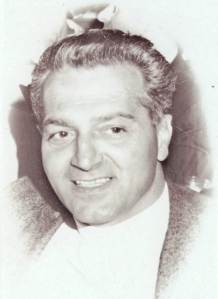 THE BOSS ALWAYS SITS IN THE BACK has never been a vanity project like some self-published books are. I didn’t borrow that kind of money or put my credibility on the line for it to fail. I believe in THE BOSS. The people who invested in it believe in it. My attorney and agent believe in it. The masses that purchased and read the first edition love it. Even people who planned or expected to find fault with it…loved it. So I’m working very hard to make sure it’s worth it. Besides, I have investors, and for their loyalty in this project alone I need to make sure they get paid back.
THE BOSS ALWAYS SITS IN THE BACK has never been a vanity project like some self-published books are. I didn’t borrow that kind of money or put my credibility on the line for it to fail. I believe in THE BOSS. The people who invested in it believe in it. My attorney and agent believe in it. The masses that purchased and read the first edition love it. Even people who planned or expected to find fault with it…loved it. So I’m working very hard to make sure it’s worth it. Besides, I have investors, and for their loyalty in this project alone I need to make sure they get paid back.
CS: While speaking to the media and telling the story of your book, did you re-live the events you wrote about? Were there moments when “The Kid” (one of three mob-aliases given to you in the story) spoke in your place?
Jon D’Amore: My hanging out with da guys ended a long time ago, but the great times we had and the life lessons we all learned (well, at least the ones who are still alive)…those stories had to be told. The audience certainly sees my pleasure as I read to them, so most certainly I re-live it as I’m reading it…no matter how many readings I do.
My early years as a musician gave me the ability to comfortably perform in front of large audiences, followed by a few years as a studio musician which honed my confidence level. Of course, the things that went on in Vegas with my Godfather also had a great effect on the way I lived my life during and after those years. Later, my life in the corporate world enabled me to take those talents and skills and use them in what the suits call “the real world.”
As for “The Kid” showing up at any readings…From the beginning of the book to the last page I describe how several great eras ended. The era of The Kid is the last of them. As much as I love talking about that slice of my life when I was called “The Kid” and the great days and nights of the mid-to-late 1970s, The Kid went away a long time ago.
CS: Who is your ideal reader?
Jon D’ Amore: Anyone who enjoys a great mob story that tells about the history of the New Jersey and New York crime families, how a boy grew up in a family involved in Organized Crime, a very slick Las Vegas scam that eventually goes bad and people turn up dead, honor, respect and a deep love between a young man and his Godfather. Of course, there’s also the pure entertainment factor. I connect a lot of things in the story with memorable and historic events and locations. Things many people can relate to and recall where they were and what they were doing at that specific time.
Interestingly enough, I was able to monitor a large percentage of those who purchased the book based on sales through THE BOSS website and at live appearances, plus by the emails I receive from those who bought the e-book, the audio-book or the printed versions on-line (where I’d have no idea of the demographics)…and the majority of THE BOSS purchasers and readers are women between 35 and 65. And to make the numbers even better, women buy additional books for the men in their lives to read.
CS: Curious stats, Jon. If a publisher is acquired, do you expect them to have you re-write the book or change the cover?
Jon D’Amore: Coming from a thirteen year background in the Hollywood screenwriting community, it’s not uncommon for a producer to praise the writer to high heaven with accolades of how great their script is and that it can go right from the page to the screen because the producer is “…just the person who can get it done.” But once the deal is cut and the producer has the rights to the script, the first thing they do is change about twenty-to-forty percent of the original script. I’ve seen it and have heard writers joke(or cry) about it all the time. It’s usually the reason some great scripts become some bad films. Though, once in a while it does work the other way around.
That being said, I’m sure the chosen publishing company will want to exert some power. Will they? Who knows? Let’s see what they come up with. If it makes THE BOSS a better book, I’d be a fool not to follow their advice. If I don’t think some things make sense…that’s why we have agents and lawyers.
Personally, I think the cover is right on the money and has become a brand for the title and story. If they want something else, it had better be great!
CS: It seems you’ve done it all – and all that you could to promote THE BOSS nationally. What can you tell your fellow authors out there considering whether to self-publish (which in today’s world is just a click away), or knock on the doors of publishing companies which can, let’s face it, take forever and a contract may or may not ever happen?
Jon D’Amore: As far as knocking on doors or mailing your cover letter and chapters to a publishing company, I’ll say this…Unless you have a blood relative in a very decent position in a quality publishing company and who also owes your parents money or a favor, do not try to walk into one or mail in your manuscript and expect any kind of positive response. Yes, there are the exceptions to the rule…but the odds say it probably won’t be you. It wasn’t for me! You must get an agent. Trust me, I thought it could be done without one…and I was wrong.
As to self-publishing…If you sincerely believe in your project to where you’ll put your bank account along with your personal and professional credibility on the line; If peoplenot closest to you (that’s right, I said not closest to you) are supporters and hard-core believers; If people who’ve achieved a notable level of success in the field of your project praise, promote, support and believe in what you’ve done; If you have the ability to put yourself in the marketplace and spotlight to speak about your project with the highest professionalism, humor and ability; If you have it within you to accept praise with humility, and criticism with appreciation and respect…DO IT!
If not, whichever one of those things you’re lacking in…learn to do it…and learn to do it very well.
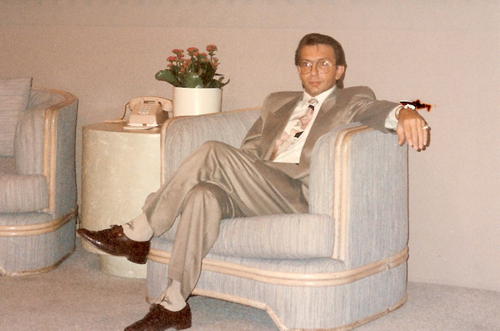
CS: Excellent tips! Now, is the future looking bright for Jon D’Amore?
Jon D’Amore: The future’s so bright…I gotta wear shades.
CS: That’s a good one! Nice talking to you, Jon. Come back with more success stories of THE BOSS.
Copyright Camilla Stein ©2012. All rights reserved.
 A perfect little book about three imperfect women and their life stories, Deranged is a literary gift from a talented author Nora Jamieson to us readers and more so to us women. Each one of us women comes to a point in life when something happens that triggers a transformation, spiritual, mental, physical. Whichever it is and whatever is the reason for it, it does seem like a natural process that we women go through when it is our time to reconnect with the Universe and claim our presence, our contribution and – in the end – our nothingness. The infinity of it all is, in my opinion, what unites all three stories in Nora’s book. The sadness and the determination, the strong spirit of womanhood, and the need to complete the journey before starting a new one. Ashes to ashes, so it is. But Deranged is all about life, learning from the past, carrying something valuable into the future, celebrating the moment. Deranged is also about strength of character. None of the heroines would be where we found them when we read the book if not for their ancestral inherited and practiced often manifestation of character, the vein of steel that we women must have to endure what we have to in the world before us and in the world after us. Ultimately, Deranged is about survival and the cost women pay for it.
A perfect little book about three imperfect women and their life stories, Deranged is a literary gift from a talented author Nora Jamieson to us readers and more so to us women. Each one of us women comes to a point in life when something happens that triggers a transformation, spiritual, mental, physical. Whichever it is and whatever is the reason for it, it does seem like a natural process that we women go through when it is our time to reconnect with the Universe and claim our presence, our contribution and – in the end – our nothingness. The infinity of it all is, in my opinion, what unites all three stories in Nora’s book. The sadness and the determination, the strong spirit of womanhood, and the need to complete the journey before starting a new one. Ashes to ashes, so it is. But Deranged is all about life, learning from the past, carrying something valuable into the future, celebrating the moment. Deranged is also about strength of character. None of the heroines would be where we found them when we read the book if not for their ancestral inherited and practiced often manifestation of character, the vein of steel that we women must have to endure what we have to in the world before us and in the world after us. Ultimately, Deranged is about survival and the cost women pay for it.